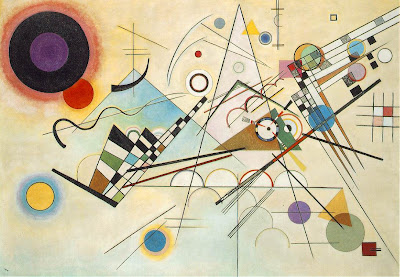Blue Rider by Wassily Kandinsky
http://www.alastairmcintosh.com/Kandinsky.htm
Alastair McIntosh is organizing a conference on art, spirituality and the future inspired by reading Kandinsky's "Concerning the spiritual in art". It wants to look, in the context of Govan: a hardy but deprived community in Scotland, at what art can mean as a way of healing and future hope.
Kandinsky offered a vision of art as service, as mirroring and nurturing human spiritual possibility. In order for it to do this, he argued that one needed to separate the spiritual from the material. In focusing on the transcendent in art (and that came to mean abstraction), he reminded us of art's highest function as a bearer, within beauty, of sacred meaning and yet opened up a fracture between art and a genuinely incarnated, embodied spirituality.
Kandinsky was both clarion call to art's true purpose and a sundering of that purpose. Therefore, he presents a fascinating opportunity to explore what art could mean and has come to mean.
McIntosh notes that there is a craving for beauty - our lives are confronted often with ugliness, an ugliness (or best indifference to beauty) with which modern art often conspires - what then are the principles that may be able to set it aright and allow it breathe again, and breathe new life into our communities.
It is a noble set of questions - and an answer must begin with a re-uniting of spirit and matter - a way in which art can hallow our everyday embodiment and lift it up whole in new visions of possibility.
Last night I had a conversation about 'nice art' - was it right to only like, be drawn to art that uplifts, that humanises and hallows, to which the unequivocal answer must be yes.
Life is too preciously short to waste it on that which degrades and de-constructs. Life as it really is can only be seen in the light of loving regard: we know best what we love, enjoy most what we celebrate.
Composition 8 by Wassily Kandinsky


Comments
Post a Comment